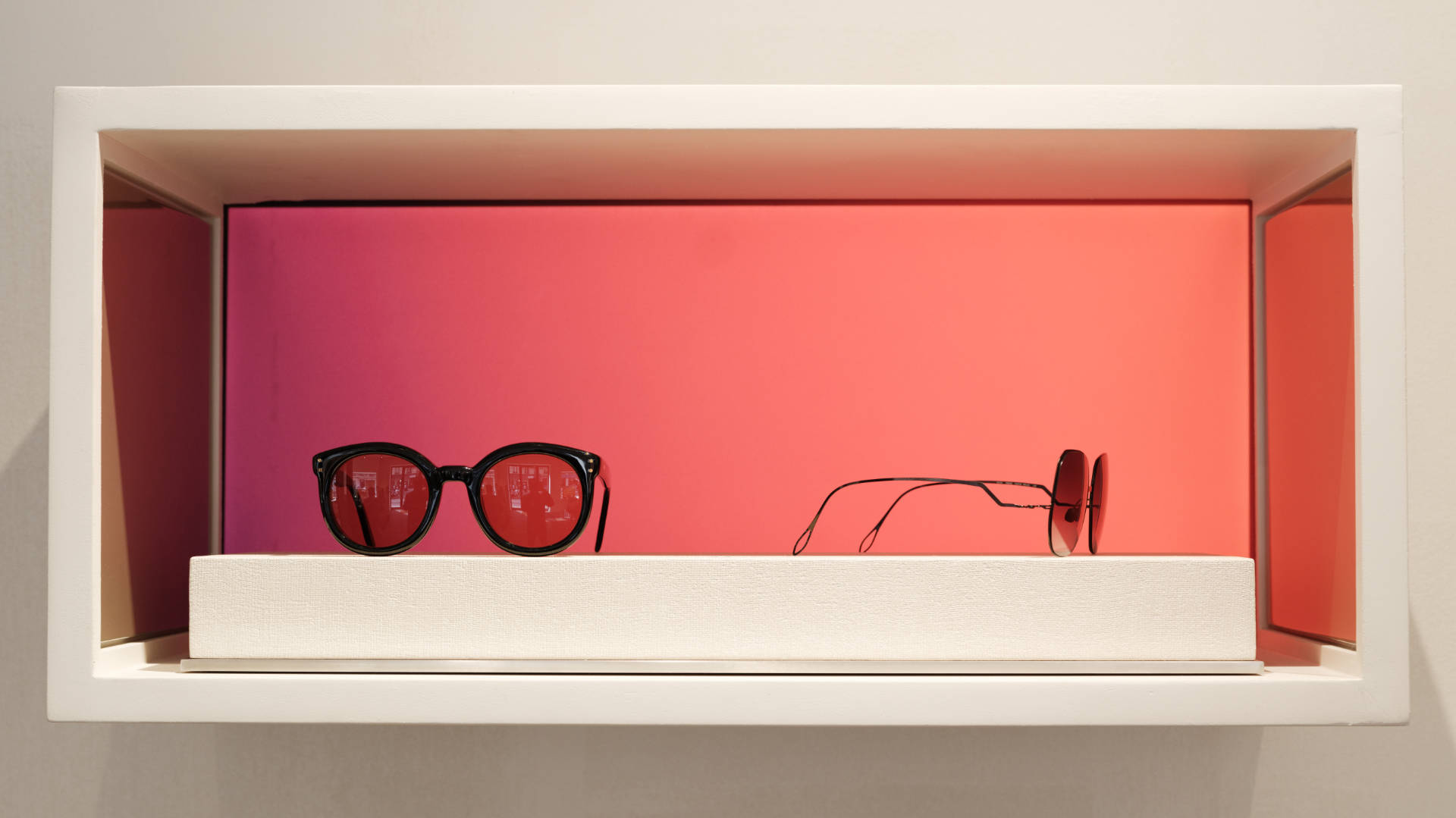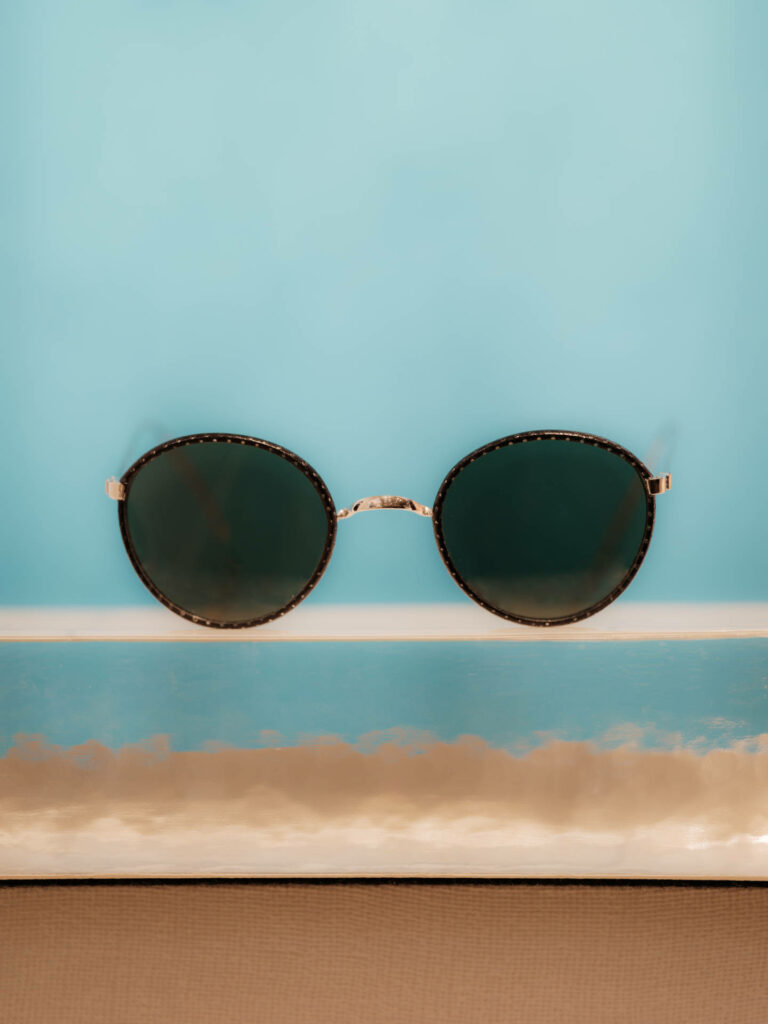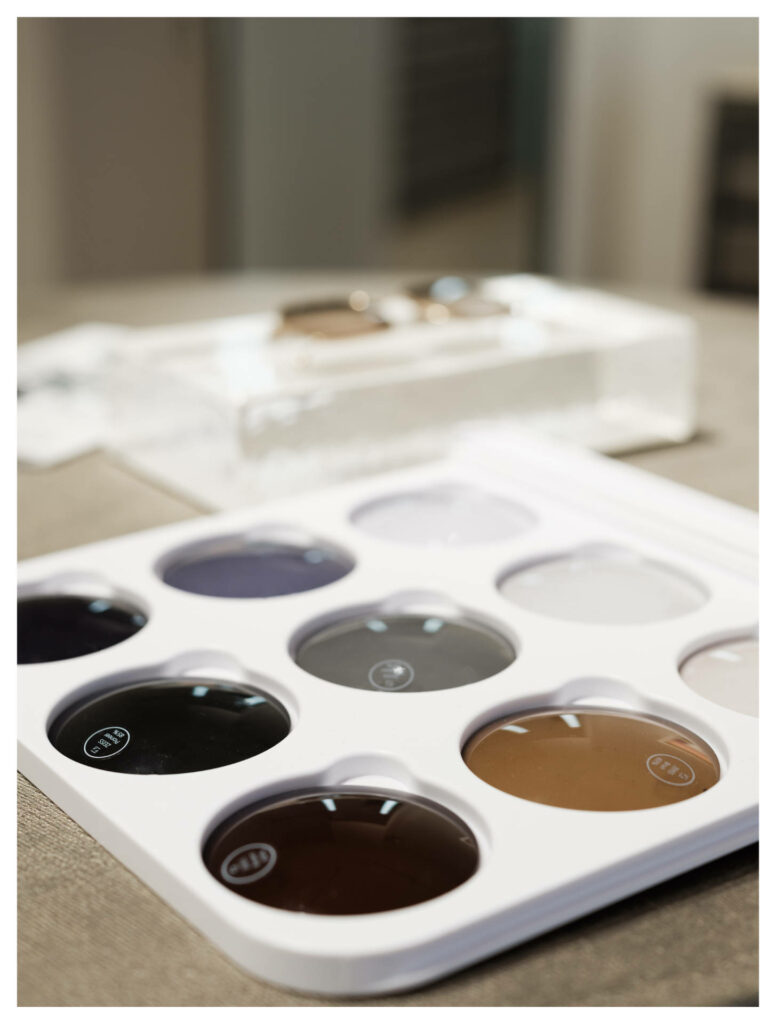
How to choose the right sunglasses?
Whether you wear them with or without a prescription, sunglasses are more than just a fashion accessory. They are essential for protecting our eyes from the sun’s rays and preventing damage caused by excessive UV exposure. Sometimes easier to choose than prescription glasses, the options are so vast that L’Ingénieur Chevallier has put together this comprehensive guide to help you choose the perfect sunglasses that combine style, comfort, and protection.

How to choose the shape of your sunglasses?
To choose the right sunglasses, you first need to determine the purpose you will use them for. At L’Ingénieur Chevallier, we start by distinguishing between city sunglasses and beach sunglasses.
City sunglasses have a thin and elegant frame and are worn with a hat while reading the newspaper at a café terrace.
Beach sunglasses, on the other hand, provide maximum coverage and offer enhanced protection.
When it comes to choosing the shape of your sunglasses based on your facial shape, you should feel much freer than you would with prescription glasses because your eyes are hidden from external view. The main guideline is to have fun and choose what makes you happy!
To learn more, feel free to refer to the article “How to choose frames according to your facial shape?“ But remember to choose it bigger because dark lenses always make the frame appear smaller. Also, to protect yourself from the sun (which comes from above), you should always cover the brow line. However, the simplest, most enjoyable, and informative way is to visit L’Ingénieur Chevallier.
Who are the sunglasses for?
Sunglasses are recommended for everyone, regardless of age!
Yet, children under 12 are very sensitive to ultraviolet rays because their crystalline lenses do not filter them completely. So, it is essential to protect their eyes from the earliest age.
At L’Ingénieur Chevallier having as our mission to serve the needs of everyone, there is also a wide range of children’s sunglasses available in our store.

How to choose the lenses for your sunglasses?
How to choose the color of your sunglass lenses?
Sunglass lenses are available in an infinite variety of colors, each one with specific characteristics and benefits. Here’s what you need to know:
Black: Black lenses are the darkest, providing a greater feeling of brightness reduction. Depending on their intensity, they can alter color perception. They are often chosen for their elegant appearance and always add a touch of sophistication.
Gray: Gray lenses are versatile. They reduce the intensity of light and offer fairly neutral color perception, making it a perfect choice for everyday use such as driving, hiking, cycling, and urban activities.
Green: Originally developed for pilots of the US Air Force, green lenses provide natural color vision and enhance contrast while reducing glare. They are particularly suitable for bright environments and many activities such as hiking, tennis, ball and water sports.
Brown: Brown lenses enhance contrast and, depending on the tint, depth of field. They can, however, give some people the impression they are slightly brighter than the colors above. They are generally recommended for driving or outdoor sports such as fishing, sailing, golf, ball sports, etc.
Blue: Blue lenses reduce eye fatigue and provide a clear and contrasted vision. They generally offer good sun protection while preserving natural color perception. They work well in changing light conditions, making them useful for mountain-biking, but not on very sunny days.
Yellow/Orange: Yellow or orange lenses enhance contrast and clarity in cloudy or low-light conditions. They can improve detail perception and are often used in low-light conditions such as night driving or in sports activities like shooting or skiing in cloudy weather.
Rose/Red: Rose or red lenses are valued for their ability to enhance contour perception and reduce eye fatigue. They are often used for outdoor activities in cloudy weather or winter sports. These colors, along with others, can be solid or gradient. Gray, brown, and green lenses are also available in transition (tint in response to UV light).
And with transition lenses, there are even more options: from clear to full tint, from gradient to full tint, and now some lenses even tint behind windshields! Finally, at L’Ingénieur Chevallier, you can also order what we call custom-tinted lenses, which means colors tailored to your preferences!

How to choose the category of sunglass lenses?
Sunglass lens categories indicate the degree of tint intensity. Here are the most common categories and their recommended uses:
Category 0: Very light tint, not suitable for outdoor use in sunny weather
Category 1: Comfort tint, not recommended for prolonged exposure, generally used in cloudy or low sunlight conditions
Category 2: Medium tint, perfect for moderate sunlight, suitable for everyday life and outdoor activities
Category 3: Dark tint, ideal for full sunlight, suitable for outdoor activities such as beach, water sports, and hiking, significantly reduces glare and provides good eye protection
Category 4: Very dark tint, designed for extreme sunlight conditions such as mountains, high altitudes, or boating, but prohibited for driving
It is important to note that category 4 lenses are prohibited for driving because they significantly reduce vision in normal light conditions.
When choosing your sunglasses, it is recommended to consider the usage environment, sunlight intensity, and your own needs. If you are unsure about the appropriate category, visit L’Ingénieur Chevallier.
Caution:
• The category does not correspond to protection! They allow you to adapt the lens tint to the light intensity and situation. The higher the category, the darker the lens, and the lower the glare.
Only UV coatings on the lenses can protect your eyes!
• Wearing sunglasses without UV filters is more harmful than not wearing them at all! UV filters on the lenses protect you from UVA and UVB rays. Without them, the pupils dilate, allowing harmful UV rays to pass through and cause further eye damage with each exposure.
Prescription lenses
Most lens colors, categories, types, and treatments can be customized according to the wearer’s visual correction. It’s a great pleasure to be able to read in the sun, observe people passing by, and see the market stalls while being protected.
Surface treatments
Sunglass lenses are available with various surface treatments to improve their performance and provide additional protection. Here are some commonly used surface treatments for sunglass lenses:
• Anti-reflective coating: Rarely used on sunglasses because their role is to optimize the transmission of light through the lens. In sunglasses, however, we want to filter out as much light as possible.
• Backside anti-reflective coating: Aims at reducing unwanted reflections from the back of the lenses. It improves clarity of vision by reducing stray reflections and preventing reflected light from reaching the eyes.
• Hydrophobic/Oleophobic coating: Makes the lenses resistant to water and oil, making them easier to clean and preventing the formation of droplets or smudges. It also reduces the adhesion of fingerprints, dust, and dirt on the lens surface.
• Scratch-resistant coating: Enhances the durability of the lenses by making them more resistant to scratches. It is particularly useful for people who regularly use their sunglasses in conditions where the lenses may come in contact with abrasive surfaces.
• Anti-fog coating: Prevents the lenses from fogging up, providing clear vision even in humid environments or when transitioning from a cold environment to a warm one. This is particularly useful for intense sports activities or in humid weather.
• Mirror coating: Creates a reflective layer on the lens surface, reducing the amount of light that reaches the eyes. Mirror lenses can provide additional protection against glare and are often used in outdoor sports.
• Polarization: Polarized lenses are designed to reduce glare caused by the reflection of light on flat surfaces such as water, snow, sand, or pavement. They contain a special filter that blocks horizontally polarized light, allowing for clearer vision, improved contrast, and reduced eye fatigue.
Note: Some of these surface treatments can be combined.

What are the risks of wearing low-quality sunglasses?
Knowing how to choose suitable sunglasses is crucial to protect your eyes from harmful ultraviolet rays.
Choosing inappropriate sunglasses can pose risks to your eye health. Here are some of them:
1. Exposure to ultraviolet (UV) rays: UV rays from the sun can cause long-term irreversible damage to the eyes, such as cataracts or macular degeneration.
2. Vision distortion: Low-quality sunglasses may have optical defects such as distortions or aberrations, which can affect the clarity of vision. This can result in blurry or distorted vision, which can be dangerous in certain situations such as driving or engaging in sports activities.
3. Glare: Choosing sunglasses with an inappropriate tint category for your specific use can lead to visual discomfort and eye fatigue. Excessive glare can make driving or outdoor activities hazardous.
As you can understand now, it is essential to choose high-quality sunglasses. The simplest and recommended approach is to seek guidance from professionals who can assist you. Do not hesitate to visit L’Ingénieur Chevallier; our experts are here to help!